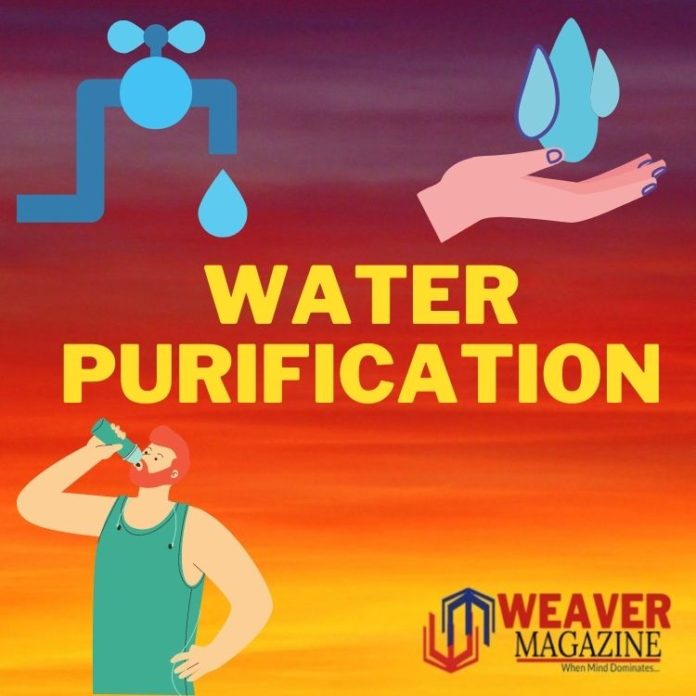—-Pure water is the biosphere’s prime medicine—-
The four essential requirements that all living beings require for their life and survival are air, water, food, and shelter. Water plays an important role in balancing the link between all living species through the contribution of processes such as photosynthesis, plant development, greenhouse effects, global wind patterns, etc. Likewise, Water comprises all other facets of the survival of living creatures. About 71 percent of the Earth’s atmosphere is water-filled by the oceans, according to international geological reports, comprising 96.54 percent of all the Earth’s water, and is absolutely undrinkable owing to salinity. In areas such as icebergs, groundwater, reservoirs, soil water, climate, etc., the remaining 3.46 percent of the Earth’s water is located and among them, about 1.42 percent is freshwater that may be used for the reproduction of living creatures. According to the study, it is found that as the primary supply of freshwater for the life of the human race, only less than 1 percent of the overall Earth’s water can safely be accumulated.
The supply of freshwater supplies is declining day by day because of the rapid development of the world’s population and industrialization. In order to address this water contamination problem, various water purification processes have been created by scientists and researchers. Two major forms of water purification exist. These are the disposal of drinking water and the treatment of wastewater. In the care of drinking water, water must be obtained and purified from its initial sources, such as rivers and lakes, in compliance with the relevant quality requirements, which are followed by an environmental protection license. This water should be safe for human use after purification and free from toxic microorganisms and organic and inorganic contaminants. In the management of wastewater, wastewater from agricultural operations should be processed and filtered until it is discharged to various ecosystems, such as surface waters, irrigation land, underwater coastal areas, etc. After purification, the water should meet the relevant discharge quality requirements, or else it will be treated as a violation of environmental standards.
Through studying the main constituents and physical properties of the untreated water, scientists and researchers have developed different water purification processes for various purposes. Significant inorganic compounds such as 𝐶a2+, 𝑀g2+, 𝑁a+, 𝐶l−, 𝐹−, 𝑁O3−, 𝐶O32−, 𝑆O42−, small inorganic compounds viz. cadmium, chromium, copper, lead, mercury, arsenic, etc., natural and synthetic organic compounds and other living species such as algae, bacteria, viruses, etc., are regarded as constituents. Turbidity, particles, texture, taste, odor, temperature, and so on should be evaluated in terms of physical characteristics. The physical, chemical and microbiological properties of water should be analyzed in order to choose and establish a suitable treatment system.
Water has variable properties from numerous sources and locations. The required water purification system can be established after the study. Processes such as adsorption, aeration, chlorination, clarification, coagulation, disinfection, filtration, flocculation, sedimentation, softening, oxidation, membrane processes, and so on are commonly used for water purification. These processes can be customized and new methods of water purification can be developed for industrial wastewater treatment or drinking water purification. The general flow chart diagram of the water purification method is mentioned below.
Some of the water purification technologies produced are extremely overpriced, while others under certain circumstances are economical but less competent. There is no precise method of purifying water. The method of purification of water should therefore be chosen and established in compliance with the characteristics of untreated water, the criteria of water quality, and the specifications of industry or domestic consumers. The building component would include some understanding of structural engineering as well as mechanical engineering. In some instances, knowledge of electronics is needed for plant automation. Likewise, by integrating experts in the fields of chemistry, chemical engineering, and civil engineering, the development of a water purification plant (drinking water or wastewater) would succeed.
The purification of water is one of the world’s most quickly developing areas. In several countries around the world, such as India, Saudi Arabia, Dubai, Israel, the United Arab Emirates, Australia, and China, and so on, desalination technologies turn seawater into freshwater for human use and irrigation systems. In the field of science and technology, water purification is also one of the increasingly evolving areas, followed by a series of laboratory-scale studies and the method of scaling up engineering techniques. In the India scenario, by optimizing the water purification process, the task of the chemical engineer in water purification is to find the most suitable and economical way.
By Sofia Khanam












